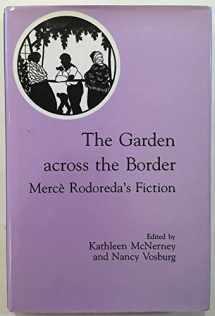
The Garden Across the Border: Merce Rodoreda's Fiction
Book details
Summary
Description
The Garden across the Border begins with a general introduction to Merce Rodoreda's life and work, an orientation to the collection itself, and a brief chronology by Kathleen McNerney. The first three essays deal with La placa del Diamant, Rodoreda's best-known and widely translated novel. Enric Bou considers the various kinds of exile Rodoreda underwent: political, geographic, linguistic, and personal. Patricia Hart compares the novel with Francesc Betriu's 1982 film. Neus Carbonell, using Julia Kristeva's theories of the symbolic order and interpretations of the biblical myth of origin, relates the questions of identity to the absence of the mother and the imposition of silence.
Several essays deal with Rodoreda's lesser-known novels. Donna McGiboney also uses the theories of Kristeva but to examine La mort i la primavera. Elizabeth Scarlett discusses Jardi vora el mar and Mirall trencat, particularly with regard to Rodoreda's well-known flower imagery. Janet Perez deals with Mirall trencat as a gothic novel. Gonzalo Navajas addresses Mirall trencat as well, using a postmodern approach. In her study of El carrer de les camelies, Kathleen Glenn returns to the picaresque novel.
There are two studies of Rodoreda's prewar novels. Joan Ramon Resina pinpoints the surprising fact that Crim is a parodic reflection of the detective novel. Randolph Pope's scrutiny of the two versions of Aloma leads him to conclude that the second constitutes a kind of censorship of the first.
Viatges i flors is a transition piece in Rodoreda's work. It is a series of vignettes written in lyrical prose. Nancy Vosburg explores metaphors of rootedness, exile, displacement, and wandering in contrast with enclosure, protection, and imprisonment.
The rest of the essays focus on Rodoreda's short stories. Josep Miguel Sobrer concentrates on the male protagonists in three stories; he sees a duality between women and men. Ana Rueda goes back into the development of fantastic fiction to explain Rodoreda who crafts, she claims, a modern fantasy. Emilie Bergmann isolates a specific historical period - 1938 - to study the development of Rodoreda's early fiction. And, in concentrating on a single story, "La salamandra," Elizabeth Rhodes brings together many of the constants.


We would LOVE it if you could help us and other readers by reviewing the book
Book review



